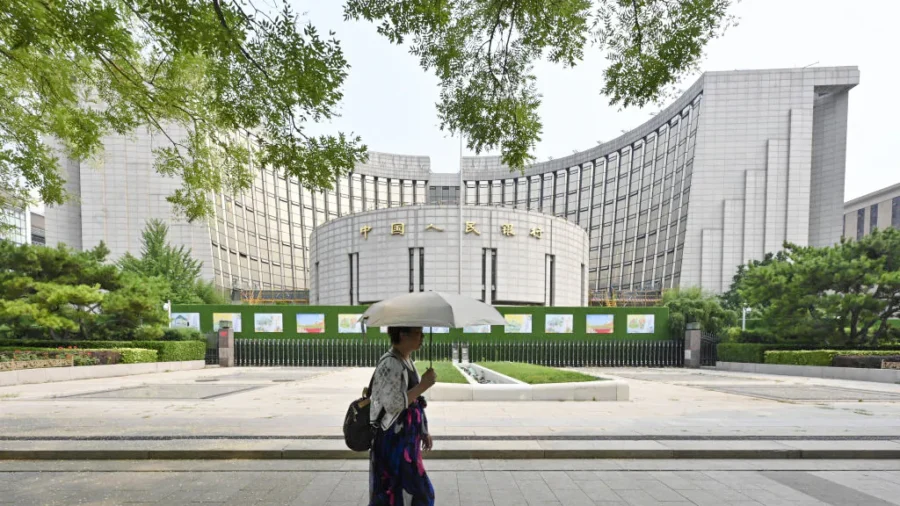The governor of the People’s Bank of China (PBOC), Pan Gongsheng, said on Oct. 18 that the central bank plans to lower banks’ reserve requirement ratio (RRR) by between 25 and 50 basis points in the fourth quarter, depending on market liquidity conditions.
The announcement at a financial forum in Beijing came as China reported this year’s slowest quarterly growth of its gross domestic product (GDP) at 4.6 percent for the third quarter, according to the Oct. 18 release by China’s National Bureau of Statistics. The official annual growth rate for January through September is 4.8 percent, lower than the 5 percent growth rate.
On Sept. 24, the PBOC announced a 50 basis points reduction in RRR, effective Sept. 27, freeing up about 1 trillion yuan (about $142 billion) for new lending. The central bank has lowered the RRR 18 times since 2018, releasing 14.4 trillion yuan ($2 trillion) into the market.
An RRR stipulates the minimum amount of cash a bank should reserve compared to its total deposits.
Major Chinese commercial banks also announced on Oct. 18 that they would lower one-year fixed-term deposit interest rates by 25 basis points.
On Sept. 24, the Chinese regime announced a raft of monetary policies to address liquidity, the property market, and the stock market. The regime then held three high-profile press events but fell short of rolling out a corresponding fiscal package to stimulate public spending.
Ni Hong, head of the Ministry of Housing and Urban-Rural Development (MOHURD), said on Oct. 17 that Beijing would increase the loans for “whitelisted” housing projects to 4 trillion yuan (about $562 billion) by the end of the year. China initiated the program in March, which provides failed development projects with special lending by state-owned banks.
According to Xiao Yuanqi, deputy head of the National Administration of Financial Regulation, approved loans for whitelisted projects totaled 2.23 trillion yuan (about $313 billion) as of Oct. 16.
An Oct. 7 report by French bank Natixis estimated that the Chinese regime would need to spend 3.4 trillion yuan to buy back idle land and unsold new homes, assuming they can be bought at 70 percent of their market value.
On Oct. 12, Lan Fo’an, Minister of Finance, said Beijing had room for a deficit increase but didn’t disclose details of any additional fiscal support.
On Oct. 8, Zheng Shanjie, chairman of the National Development and Reform Commission, announced an advance of 100 billion yuan ($14.1 billion) from the 2025 central investment budget to be used this year. The regime will also allow construction projects, valued at another 100 billion yuan in next year’s budget, to start before the year-end. Zheng reaffirmed the 5 percent growth target for 2024.
Ding Xuexiang, a member of the Politburo standing committee and China’s vice premier, told Chinese state-owned media on Oct. 17 that local governments should focus on implementing the announced economic support policies and achieve the growth target.
Mike Sun, a U.S.-based businessman with decades of experience advising foreign investors and traders in China, told The Epoch Times that the 4 trillion yuan whitelisting fund seemed to be “it,” referring to a much anticipated fiscal stimulus. He uses an alias to protect himself from retaliation from the Chinese Communist Party.
His read is that the Chinese regime will focus on rescuing the housing market and meeting the GDP growth target by the end of the year. Based on Ding’s remarks, Sun forecasts no “big moves” of additional fiscal stimulus in 2024.
At the Oct. 17 press conference, Ni of the MOHURD repeatedly said his goal is to “stop the [housing] market from falling and return it to stability.” He also mentioned that after three years of adjustments, China’s real estate market had started to “bottom out.”
From The Epoch Times

